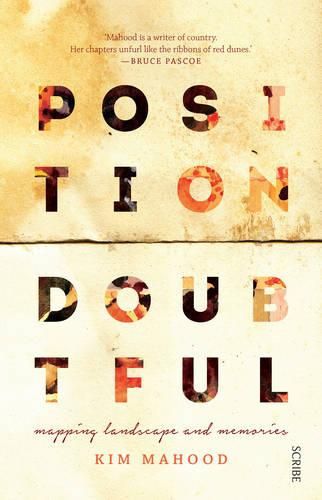Readings Newsletter
Become a Readings Member to make your shopping experience even easier.
Sign in or sign up for free!
You’re not far away from qualifying for FREE standard shipping within Australia
You’ve qualified for FREE standard shipping within Australia
The cart is loading…






Since the publication of her prize-winning memoir Craft for a Dry Lake in 2000, writer and artist Kim Mahood has been returning to the Tanami desert country in far north-western Australia where, as a child, she lived with her family on a remote cattle station. The land is timeless, but much has changed: the station has been handed back to its traditional landowners; the mining companies have arrived; and Indigenous art has flourished.
By immersing herself in the life of a small community, and in her ground-breaking mapping projects, Mahood seeks to understand her own place in the country she loves, and the disparate cultures that inhabit it. Her investigations of the structures and patterns of the land have attuned her to the country’s topography, its plant life, and its ever-changing moods, and led her to a deep understanding of the significance of the land in the psyche of Aboriginal people, in the forming of their relationships, and in the making of their art.
Kim’s own connections with the land, and the legacy of her settler upbringing on her attitudes and relationships, are concerns that stimulate her constant introspection. Kim herself is an artist of astonishing versatility. She works with words, with paint, with installations, and with performance art. Her writing about her own painting, and about the work of the desert artists, is profoundly enlightening. She captures the look and feel of the paintings, and of the desert environment that they represent so acutely that her writing makes palpable the link between artist and landscape.
This is a beautiful and intense exploration of memory, landscape, and homecoming. Written with great energy and humour, Position Doubtful offers a unique portrait of black and white relations in contemporary Australia.
$9.00 standard shipping within Australia
FREE standard shipping within Australia for orders over $100.00
Express & International shipping calculated at checkout
Since the publication of her prize-winning memoir Craft for a Dry Lake in 2000, writer and artist Kim Mahood has been returning to the Tanami desert country in far north-western Australia where, as a child, she lived with her family on a remote cattle station. The land is timeless, but much has changed: the station has been handed back to its traditional landowners; the mining companies have arrived; and Indigenous art has flourished.
By immersing herself in the life of a small community, and in her ground-breaking mapping projects, Mahood seeks to understand her own place in the country she loves, and the disparate cultures that inhabit it. Her investigations of the structures and patterns of the land have attuned her to the country’s topography, its plant life, and its ever-changing moods, and led her to a deep understanding of the significance of the land in the psyche of Aboriginal people, in the forming of their relationships, and in the making of their art.
Kim’s own connections with the land, and the legacy of her settler upbringing on her attitudes and relationships, are concerns that stimulate her constant introspection. Kim herself is an artist of astonishing versatility. She works with words, with paint, with installations, and with performance art. Her writing about her own painting, and about the work of the desert artists, is profoundly enlightening. She captures the look and feel of the paintings, and of the desert environment that they represent so acutely that her writing makes palpable the link between artist and landscape.
This is a beautiful and intense exploration of memory, landscape, and homecoming. Written with great energy and humour, Position Doubtful offers a unique portrait of black and white relations in contemporary Australia.
Position Doubtful is an astonishing, sprawling memoir of place. Returning annually to the Tanami desert country in which she had lived as a child on a remote cattle station, Tanami Downs (though for her it is always Mongrel Downs), artist Kim Mahood works with the traditional owners of the Tanami desert country to map the landscape and memories of the region.
The mapping project begins in Mulan in 2004; its central purpose is, as Mahood relays, ‘to create a cross-cultural document that shows the interplay between Aboriginal knowledge and western scientific knowledge in a form that is easily accessible to both Walmajarri and kartiya [white people]’. At this first coming together, Mahood sets out a canvas map on which she has drawn a grid over a printed satellite image of the area. As the first person starts to recount their knowledge of the area, the bounds of the map prove insufficient. Notations start to clutter the sides and when everyone leaves, Mahood adds extra strips of canvas to the sides at odd angles to accommodate the mapping of place that has been told.
In the way of that first map, Position Doubtful moves outwards, reaching back from the mapping into earlier annual trips that Mahood took, including her visits to the salt lakes near the station she grew up on, and her time living and working at the art centre at Balgo.
In the early 1960s, Mahood’s father had sought to map stock routes over the Tanami using an aeronautical map on which the notation ‘Position Doubtful’ appeared with some regularity, a notation Mahood takes as a metaphor for white Australian movement through the country.
In Position Doubtful, Mahood charts her experience of place and lays out a space in which we can begin to see the multitudes of place and memory that create the country.
See what the Readings’ team have to say on the blog, discover related events and podcast episodes.